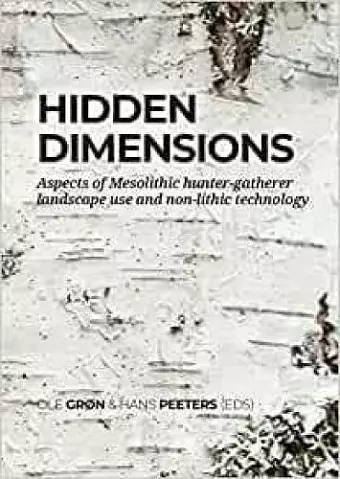Hidden dimensions
Aspects of Mesolithic hunter-gatherer landscape use and non-lithic technology
Hans Peeters editor Ole Grøn editor
Format:Hardback
Publisher:Sidestone Press
Published:3rd Nov '22
Currently unavailable, and unfortunately no date known when it will be back

The modelling and representation of prehistoric hunter-gatherer behaviours is largely influenced by the investigation of sites with high archaeological visibility, due to the presence of large amounts of knapped lithics, which generally survive the ravages of time. As a consequence, behaviours which were not, or to a limited extent, associated with stone tools are underrepresented in archaeological narratives about hunter-gatherer lifestyles, which, however, have characterised most of the human past. Occasionally, at sites where preservation conditions are good, archaeological finds point to the importance of organic resources for tools and the manufacturing of a broad range of use items, such as clothing, footwear, containers, as well as tent covers and mats. In fact, it is highly likely that organic materials – e.g. wood, bark, bone, antler, hide – were dominant in the creation of material culture, and possibly played a pivotal role in sociocultural communication. The lack of attention for sites and phenomena associated with no or few lithics causes several problems with regard to archaeological insights into the variability in landscape use, technological traditions, and sociocultural interaction. This book presents a collection of articles which address these problems from several angles, with an emphasis on the Mesolithic of NW Europe: dwellings and activities associated with no or few lithics; variability in site location and landscape use, notably in relation to hunting and ethology of game species; and technological aspects of non-lithic material culture. The book intends to increase awareness of the consequences of the issues addressed for our understanding of the past, and boost research and heritage management initiatives in this field.
ISBN: 9789464261264
Dimensions: unknown
Weight: unknown
312 pages